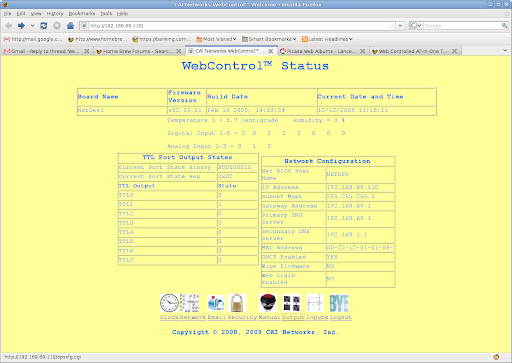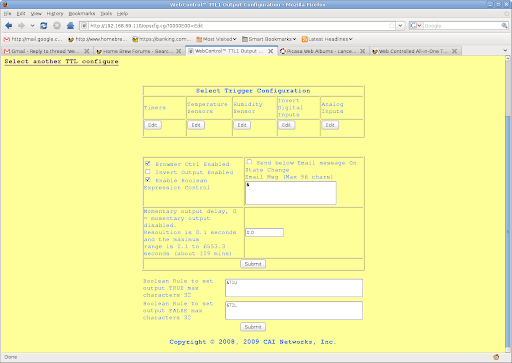wormfishin
Well-Known Member
thanks to the help of some of the guys in the chat I realized I'm an idiot, it had grabbed a dhcp address.




















<<snip>> Normally the DS18B20 requires a +5V power line separate from the signal line (i.e. it requires 3 wires). There's an operating mode that only uses 2 wires, called 'parasite' mode, where the device takes power from the signal line. I was trying to use parasite mode, and ran into trouble with pushing enough power over the signal line when running long distances (over 50 feet) thanks to the added resistance in the longer wire. I was able to overcome that by lowering the pull-up resistor value. Once I got the signal stable it was correct at all times.
Hey "Maddog", could you explain what a "pull-up" resistor is?
Also, are you using twisted wire? I've been told that it can make a big difference in the performance when not using the 5 Vdc.
One last note, I read somewhere that the 5 Vdc wire was needed if measuring temps in the higher range. But in my initial testing, they seem to read just fine using straight phone line, and distances of about 10 ft. (no tree built yet).